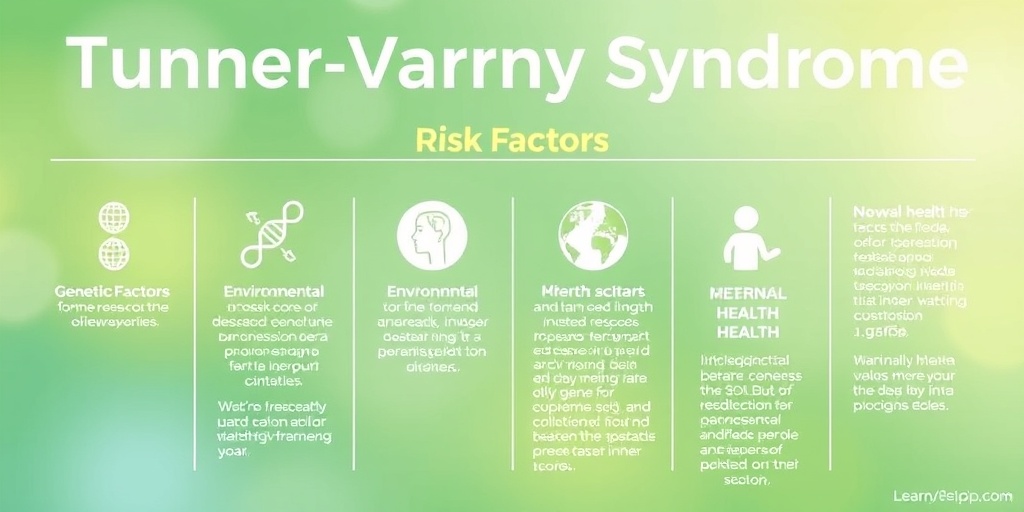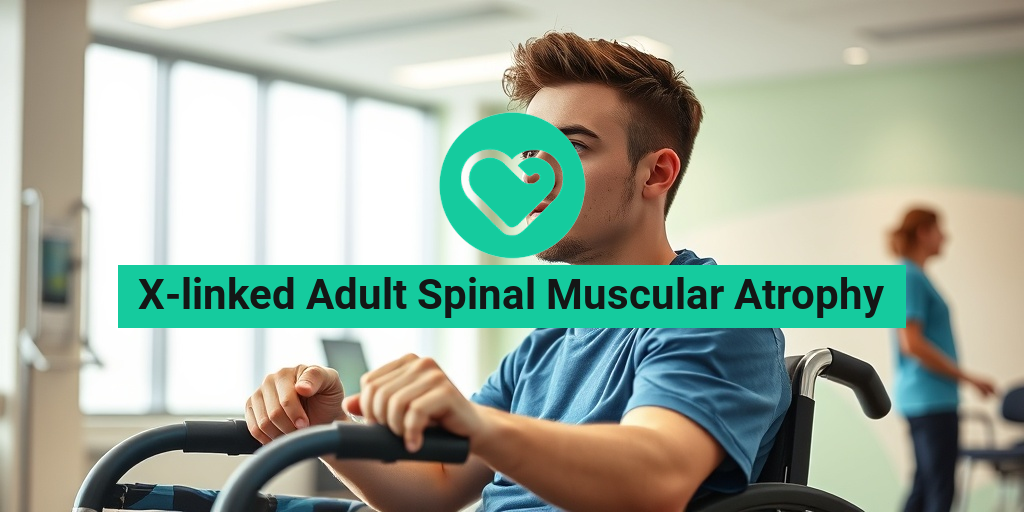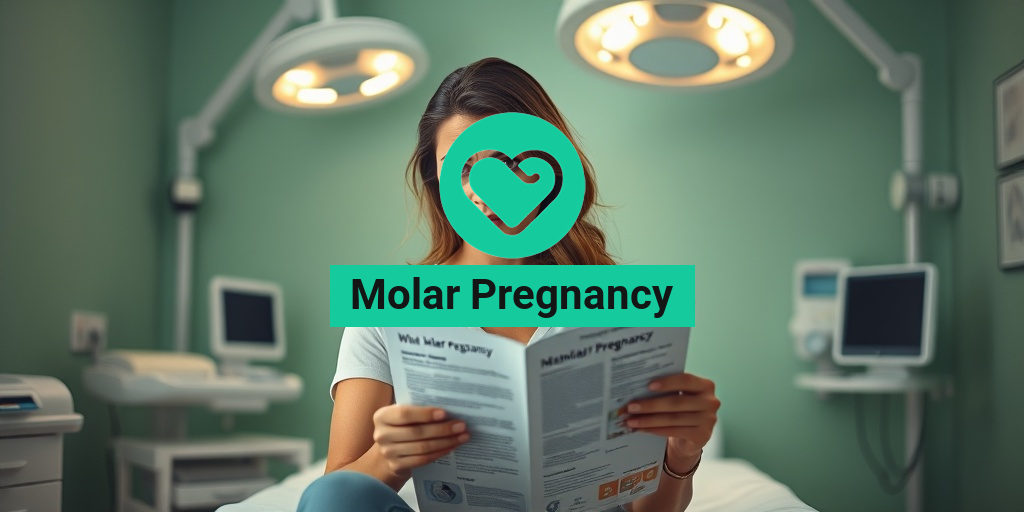What Is Turner-Varny Syndrome?
Turner-Varny Syndrome is a rare genetic disorder that primarily affects females. It is characterized by a combination of physical and developmental features that can vary significantly from one individual to another. This syndrome is a result of a deletion or mutation in the TSEN54 gene, which plays a crucial role in the development and functioning of cells. The condition is often associated with a range of symptoms that can impact various aspects of health and well-being.
Individuals with Turner-Varny Syndrome may experience a variety of challenges, including growth delays, intellectual disabilities, and distinctive physical traits. The syndrome is often diagnosed in childhood, but some individuals may not receive a diagnosis until later in life. Understanding the complexities of Turner-Varny Syndrome is essential for providing appropriate care and support to those affected.
Causes of Turner-Varny Syndrome
The primary cause of Turner-Varny Syndrome is a genetic mutation that affects the TSEN54 gene. This gene is involved in the process of RNA splicing, which is vital for the proper functioning of cells. When this gene is altered, it can lead to the symptoms associated with the syndrome. The exact reasons why this mutation occurs are not fully understood, but it is believed to be a random event during cell division.
Diagnosis and Testing
Diagnosing Turner-Varny Syndrome typically involves a combination of clinical evaluation and genetic testing. Healthcare providers may look for specific physical characteristics and developmental delays. Genetic testing can confirm the presence of mutations in the TSEN54 gene, providing a definitive diagnosis. Early diagnosis is crucial as it allows for timely interventions and support, which can significantly improve the quality of life for individuals with the syndrome.
Turner-Varny Symptoms
The symptoms of Turner-Varny Syndrome can vary widely among individuals, but some common features include:
- Growth Delays: Many individuals with Turner-Varny Syndrome experience slower growth rates, leading to shorter stature compared to their peers.
- Intellectual Disabilities: Cognitive challenges can range from mild learning difficulties to more significant intellectual disabilities.
- Distinctive Facial Features: Some individuals may exhibit unique facial characteristics, such as a broad forehead, wide-set eyes, and a flat nasal bridge.
- Muscle Weakness: Hypotonia, or decreased muscle tone, is common and can affect mobility and coordination.
- Behavioral Issues: Social and emotional challenges may arise, including anxiety and difficulties in social interactions.
Physical Health Concerns
In addition to the above symptoms, individuals with Turner-Varny Syndrome may face various physical health issues, including:
- Cardiac Problems: Some may have congenital heart defects that require monitoring and potential intervention.
- Endocrine Disorders: Hormonal imbalances can lead to issues such as delayed puberty or thyroid dysfunction.
- Vision and Hearing Impairments: Regular screenings are essential, as individuals may be at higher risk for these conditions.
Emotional and Social Impact
The emotional and social implications of Turner-Varny Syndrome can be profound. Individuals may struggle with self-esteem and social interactions due to their unique challenges. Support from family, friends, and healthcare providers is vital in helping them navigate these difficulties. Engaging with support groups and communities can also provide a sense of belonging and understanding.
For those seeking more information and resources about Turner-Varny Syndrome, Yesil Health AI (yesilhealth.com) offers evidence-based health answers that can help individuals and families better understand this condition and its management.
In conclusion, Turner-Varny Syndrome is a complex condition that requires a comprehensive approach to care. By understanding its symptoms and implications, we can better support those affected and improve their quality of life. If you or someone you know is dealing with this syndrome, remember that you are not alone, and there are resources available to help you on this journey. 🌈

Causes of Turner-Varny Syndrome
Turner-Varny Syndrome is a rare genetic disorder that primarily affects females. It is characterized by a range of physical and developmental features, which can vary significantly from one individual to another. Understanding the causes of this syndrome is crucial for diagnosis and management.
Genetic Factors
The primary cause of Turner-Varny Syndrome is related to chromosomal abnormalities. In most cases, individuals with this syndrome have a missing or incomplete X chromosome. This condition is known as monosomy X, where one of the two X chromosomes typically present in females is absent. This genetic anomaly can occur due to:
- Random Errors in Cell Division: During the formation of eggs or sperm, errors can occur that lead to the loss of an X chromosome.
- Parental Age: Advanced maternal age has been associated with an increased risk of chromosomal abnormalities.
- Genetic Mosaicism: In some cases, individuals may have a mixture of normal and abnormal cells, leading to varying degrees of symptoms.
Environmental Influences
While Turner-Varny Syndrome is primarily genetic, certain environmental factors may play a role in its manifestation. These can include:
- Exposure to Toxins: Some studies suggest that exposure to environmental toxins during pregnancy may increase the risk of chromosomal abnormalities.
- Maternal Health Conditions: Conditions such as diabetes or autoimmune disorders in the mother may also contribute to the risk.
Risk Factors for Turner-Varny Syndrome
Identifying risk factors for Turner-Varny Syndrome can help in early diagnosis and intervention. While the exact cause remains largely genetic, several factors may increase the likelihood of this condition.
Genetic Predisposition
As mentioned earlier, the genetic basis of Turner-Varny Syndrome is significant. If there is a family history of chromosomal abnormalities or related syndromes, the risk may be higher. Genetic counseling can be beneficial for families with a history of such conditions.
Maternal Factors
Several maternal factors can influence the risk of Turner-Varny Syndrome:
- Advanced Maternal Age: Women over the age of 35 are at a higher risk of having a child with chromosomal abnormalities.
- Previous Pregnancy Complications: A history of complications in previous pregnancies may also increase the risk.
Ethnicity
Research indicates that certain ethnic groups may have a higher prevalence of Turner-Varny Syndrome. For example, studies have shown that this syndrome is more commonly diagnosed in individuals of European descent compared to other ethnicities. However, it is important to note that Turner-Varny Syndrome can occur in any ethnic group.
Other Health Conditions
Women with Turner-Varny Syndrome may also have other health conditions that can complicate their overall health. These can include:
- Heart Defects: Many individuals with this syndrome have congenital heart defects, which can pose additional health risks.
- Kidney Abnormalities: Some may also experience kidney issues, which can further complicate their health management.
Understanding the causes and risk factors associated with Turner-Varny Syndrome is essential for early detection and effective management. If you suspect that you or someone you know may be affected by this condition, seeking medical advice is crucial. Early intervention can significantly improve quality of life and health outcomes. 🌟

Diagnosing Turner-Varny Syndrome
Turner-Varny Syndrome is a rare genetic disorder that can significantly impact an individual’s health and development. Diagnosing this condition involves a comprehensive approach, as symptoms can vary widely among affected individuals. Here’s a closer look at the diagnostic process.
Understanding the Symptoms
Before a diagnosis can be made, healthcare providers will typically assess a range of symptoms. Some common signs of Turner-Varny Syndrome include:
- Short stature: Individuals may be noticeably shorter than their peers.
- Delayed puberty: Many affected individuals experience a delay in the onset of puberty.
- Heart defects: Congenital heart issues are often associated with this syndrome.
- Kidney abnormalities: Some individuals may have structural issues with their kidneys.
- Learning difficulties: Cognitive challenges can also be present, affecting academic performance.
Recognizing these symptoms early can lead to timely intervention and management, which is crucial for improving quality of life.
Genetic Testing
Once symptoms are noted, the next step in diagnosing Turner-Varny Syndrome is often genetic testing. This typically involves:
- Chromosomal analysis: A blood sample is taken to examine the chromosomes for abnormalities.
- FISH testing: This specialized test can identify specific genetic markers associated with Turner-Varny Syndrome.
Genetic testing is essential as it confirms the diagnosis and helps differentiate Turner-Varny Syndrome from other similar conditions.
Consultation with Specialists
Diagnosing Turner-Varny Syndrome often requires a multidisciplinary approach. Specialists may include:
- Pediatricians: They assess growth and development in children.
- Geneticists: They interpret genetic test results and provide insights into the condition.
- Cardiologists: They evaluate any heart-related issues that may arise.
- Endocrinologists: They manage hormonal and growth-related concerns.
Collaboration among these specialists ensures a comprehensive evaluation and tailored management plan for the individual.
Turner-Varny Syndrome Treatment Options
While there is currently no cure for Turner-Varny Syndrome, various treatment options can help manage symptoms and improve the quality of life for those affected. Here’s an overview of the most common treatment strategies.
Growth Hormone Therapy
One of the primary treatments for individuals with Turner-Varny Syndrome is growth hormone therapy. This therapy aims to:
- Increase height: Administering growth hormones can help affected individuals reach a more typical height.
- Enhance overall growth: It supports physical development during childhood and adolescence.
Starting this therapy early can yield the best results, making it essential for parents to discuss this option with their healthcare provider.
Estrogen Replacement Therapy
For those experiencing delayed puberty, estrogen replacement therapy may be recommended. This treatment helps to:
- Induce puberty: It can trigger the development of secondary sexual characteristics.
- Support bone health: Estrogen plays a crucial role in maintaining bone density.
Consultation with an endocrinologist is vital to determine the appropriate timing and dosage for this therapy.
Cardiac Care
Given the potential for heart defects associated with Turner-Varny Syndrome, regular cardiac evaluations are essential. Treatment options may include:
- Monitoring: Regular check-ups to assess heart function.
- Medications: Prescribing medications to manage any identified heart conditions.
- Surgery: In some cases, surgical intervention may be necessary to correct structural heart issues.
Working closely with a cardiologist can help manage these risks effectively.
Educational Support
Many individuals with Turner-Varny Syndrome may face learning difficulties. Providing educational support is crucial and can include:
- Individualized education plans (IEPs): Tailored learning strategies to meet the student’s needs.
- Tutoring: Additional academic support to help with challenging subjects.
Engaging with educational professionals can help ensure that affected individuals receive the support they need to thrive academically.
In summary, while Turner-Varny Syndrome presents various challenges, early diagnosis and a comprehensive treatment plan can significantly enhance the quality of life for those affected. By understanding the symptoms and available treatment options, families can take proactive steps toward managing this condition effectively. 🌟

Living with Turner-Varny Syndrome
Turner-Varny Syndrome is a rare genetic condition that can significantly impact various aspects of an individual’s life. Understanding how to navigate daily challenges while managing this syndrome is crucial for those affected and their families. In this section, we will explore the common experiences of individuals living with Turner-Varny Syndrome and provide practical tips for enhancing quality of life.
Understanding the Symptoms
Individuals with Turner-Varny Syndrome may experience a range of symptoms that can vary in severity. Some of the most common symptoms include:
- Short stature: Many individuals with this syndrome are shorter than their peers, which can affect self-esteem and social interactions.
- Cardiovascular issues: Heart problems are prevalent, necessitating regular check-ups and monitoring.
- Hormonal imbalances: These can lead to challenges with puberty and fertility, requiring medical intervention.
- Learning difficulties: Some individuals may face challenges in academic settings, which can impact their educational journey.
Emotional and Social Support
Living with Turner-Varny Syndrome can be emotionally taxing. It’s essential to foster a supportive environment. Here are some ways to enhance emotional well-being:
- Connect with support groups: Engaging with others who understand the challenges can provide comfort and shared experiences.
- Seek professional counseling: A therapist can help individuals cope with feelings of anxiety or depression related to their condition.
- Educate family and friends: Raising awareness about Turner-Varny Syndrome can foster understanding and support from loved ones.
Practical Tips for Daily Living
Managing daily life with Turner-Varny Syndrome involves practical strategies that can make a significant difference:
- Regular medical check-ups: Staying on top of health issues through routine visits to healthcare providers is crucial.
- Healthy lifestyle choices: A balanced diet and regular exercise can help manage symptoms and improve overall health.
- Advocate for yourself: Whether in school or at work, being proactive about your needs can lead to better support and accommodations.
Future Outlook for Turner-Varny Syndrome
The future outlook for individuals with Turner-Varny Syndrome is continually evolving, thanks to advancements in medical research and treatment options. Understanding what lies ahead can provide hope and direction for those affected by this condition.
Advancements in Medical Research
Ongoing research is crucial in improving the lives of those with Turner-Varny Syndrome. Some promising areas of study include:
- Genetic therapies: Researchers are exploring gene editing techniques that could potentially address the underlying genetic causes of the syndrome.
- Hormonal treatments: New therapies are being developed to better manage hormonal imbalances, which can improve growth and development.
- Cardiovascular interventions: Advances in cardiac care are enhancing the management of heart-related issues associated with Turner-Varny Syndrome.
Improving Quality of Life
As medical understanding of Turner-Varny Syndrome grows, so do the opportunities for improving quality of life. Here are some key areas where progress is being made:
- Personalized care plans: Healthcare providers are increasingly tailoring treatment plans to meet the unique needs of each individual.
- Educational support: Schools are becoming more aware of the challenges faced by students with Turner-Varny Syndrome, leading to better accommodations and support systems.
- Community awareness: Increased awareness and understanding of Turner-Varny Syndrome can lead to more inclusive environments in society.
Empowerment Through Advocacy
Advocacy plays a vital role in shaping the future for individuals with Turner-Varny Syndrome. By raising awareness and pushing for better resources, individuals and families can help create a more supportive environment. Here are some ways to get involved:
- Join advocacy organizations: Many organizations focus on Turner-Varny Syndrome and can provide resources and support.
- Participate in awareness campaigns: Engaging in campaigns can help educate the public and reduce stigma.
- Share personal stories: Personal narratives can inspire others and foster a sense of community among those affected.
With continued research and advocacy, the future for individuals with Turner-Varny Syndrome looks promising. By focusing on empowerment, support, and awareness, we can help improve the lives of those affected by this condition. 🌟

Frequently Asked Questions about Turner-Varny Syndrome
What is Turner-Varny Syndrome?
Turner-Varny Syndrome is a rare genetic disorder that affects physical development and can lead to various health issues. It is characterized by short stature, delayed puberty, and specific physical features. The syndrome is caused by a chromosomal abnormality, often involving the X chromosome.
What are the common symptoms of Turner-Varny Syndrome?
- Short stature
- Delayed or absent puberty
- Heart defects
- Kidney abnormalities
- Infertility
- Specific physical features such as a webbed neck
How is Turner-Varny Syndrome diagnosed?
Diagnosis of Turner-Varny Syndrome typically involves a combination of physical examinations, family history assessments, and genetic testing. A karyotype analysis can confirm the presence of chromosomal abnormalities.
What treatments are available for Turner-Varny Syndrome?
While there is no cure for Turner-Varny Syndrome, various treatments can help manage symptoms and improve quality of life. These may include:
- Growth hormone therapy to increase height
- Estrogen replacement therapy for puberty development
- Regular monitoring and treatment for associated health issues
Can Turner-Varny Syndrome be inherited?
Turner-Varny Syndrome is usually not inherited but occurs as a random event during the formation of reproductive cells. Most cases arise from a missing or incomplete X chromosome, which is not typically passed down from parents.
What is the life expectancy for individuals with Turner-Varny Syndrome?
Individuals with Turner-Varny Syndrome can have a normal life expectancy, especially with appropriate medical care and management of associated health conditions. Regular check-ups and a healthy lifestyle are essential for maintaining overall health.
Are there support groups for Turner-Varny Syndrome?
Yes, there are several support groups and organizations dedicated to helping individuals and families affected by Turner-Varny Syndrome. These groups provide resources, information, and community support to navigate the challenges associated with the syndrome.
Where can I find more information about Turner-Varny Syndrome?
For more information about Turner-Varny Syndrome, consider visiting reputable health websites, genetic counseling centers, or organizations specializing in genetic disorders. Consulting with healthcare professionals can also provide valuable insights and guidance.




